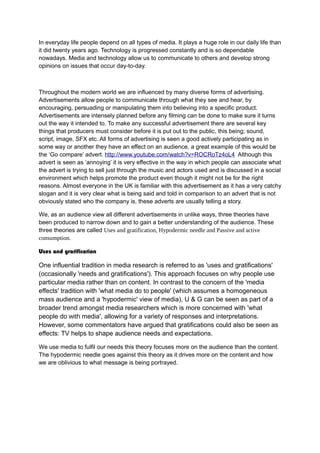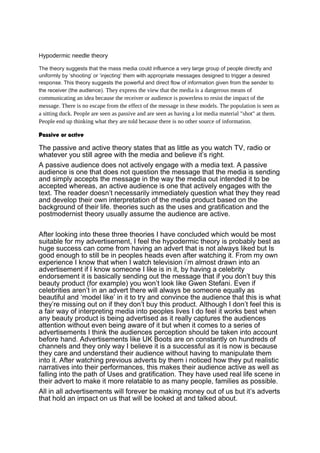This document discusses different theories about how audiences interact with media and advertising:
- The uses and gratification theory focuses on why people use certain media to fulfill needs, rather than on the media content itself.
- The hypodermic needle theory suggests media can directly influence large audiences by "injecting" them with messages to trigger a desired response. It views audiences as passive.
- The passive/active theory considers whether audiences passively accept media messages or actively engage with them by interpreting based on their own life experiences.
The document analyzes how these theories apply to different types of advertisements, concluding that the hypodermic needle theory often works best for beauty ads that aim to influence audiences without their awareness, while

